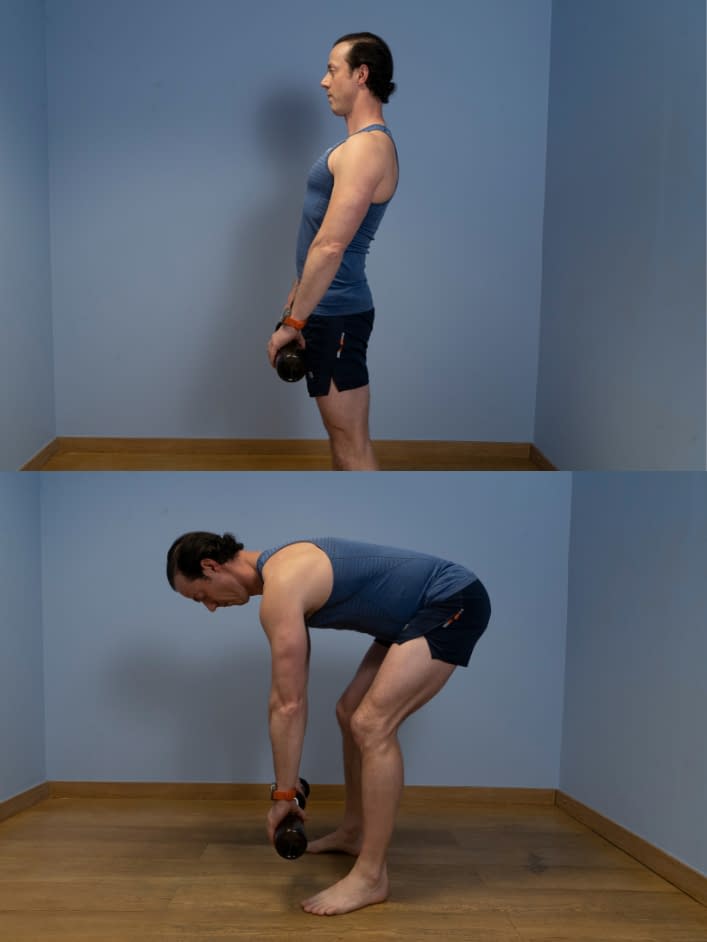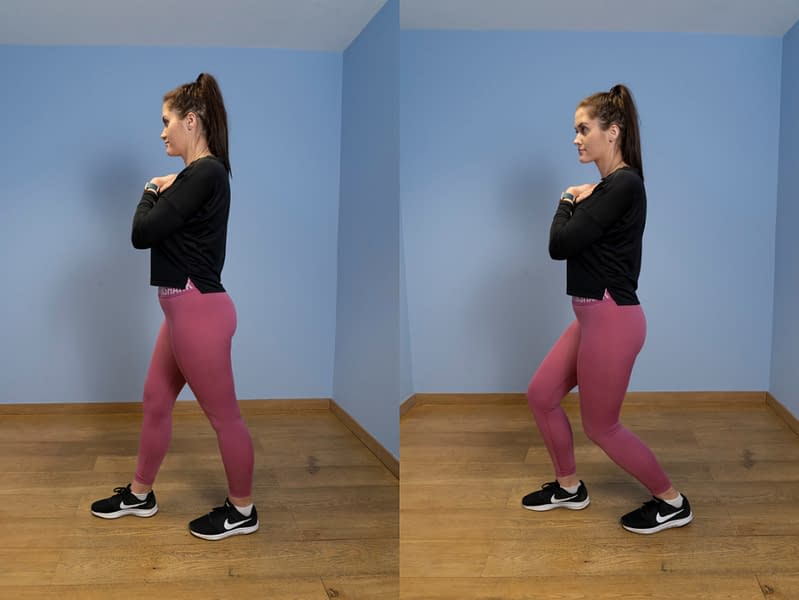Greater Trochanteric Pain Syndrome Advanced Exercise Programme
Aim to perform this programme a minimum of once per day unless prescribed otherwise. As with any new exercise, start slowly (repetitions as able) and build up as you are able within the guidelines below.
Pain should not exceed 3/10 whilst completing this exercise programme.
1. Single leg toe touch
- Perform this exercise standing on the affected leg and have a wall/stable object nearby to assist with balance.
- Shift your weight on to the affected leg and ‘hover’ the other leg off the floor.
- Bend forward from the hip to move towards touching your toes.
- At the same time, the trailing leg should stay straight and will travel backwards to act as a counterbalance whilst keeping your spine straight.
- As you get close to touching your toes, you should feel a pull in the hamstrings and buttock of the standing leg.
- Squeeze the buttock muscles to reverse the movement and return to standing.
- To progress, hold a small amount of weight in the opposite hand to the leading leg and gradually increase this as strength develops.
2. Deadlift
- Stand upright with feet hip-width apart, a slight knee bend and a weight held in both hands.
- Engage the abdominal region and in a controlled manner, bend forward at the hips trying to keep your back straight. Do not let your knees bend further. Let your hips press out backwards.
- Go down as far as you feel comfortable or until your back starts to round.
- Come back up to standing and repeat.
3. Split squat with toe touch
- Start by standing with all the weight on one leg.
- Now place the other leg on the floor on the ball of the foot next to or slightly behind the standing leg.
- Begin with 60% of the weight on the standing leg and 40% on the supporting leg.
- Bend the knee and the same time bend the hip as if you were sitting back into a chair.
- Go down until the standing knee is approximately at a right angle.
- Slowly return to an upright position and repeat.
- As the exercise gets easier reduce the support on the non-standing leg.
We recommend consulting a musculoskeletal physiotherapist to ensure exercises are best suited to your recovery. If you are carrying out an exercise regime without consulting a healthcare professional, you do so at your own risk. If you have any concerns whilst completing these exercises, please contact a healthcare professional.
More Plans
This programme focuses on early, appropriate loading of the affected tendon and maintenance of lower limb strength and stability. We suggest you carry this out once a day for approximately 2-6 weeks as pain allows, this should not exceed any more than 3/10 on your perceived pain scale.
- 0
- 1
- 2
- 3
- 4
- 5
- 6
- 7
- 8
- 910
This is the next progression. More focus is given to progressive loading of the gluteal tendons and lower limb strengthening. This should not exceed any more than 3/10 on your perceived pain scale.
- 0
- 1
- 2
- 3
- 4
- 5
- 6
- 7
- 8
- 910


